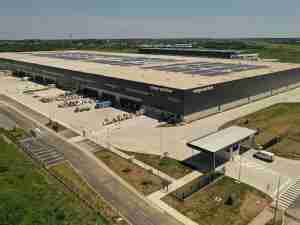Resilinc, the global leader in supply chain mapping and risk monitoring, is sharing exclusive new data highlighting the top drivers of supply chain disruptions for 2022. The data, compiled by Resilinc’s EventWatchAI monitoring database reveals that supply chain disruptions were up 32% year-over-year, with an overwhelming majority (91%) being human-caused.
The top 10 disruptions for 2022 include:
- Factory Fire
- Mergers & Acquisition
- Business Sale
- Leadership Transition
- Factory Disruption
- Labor Disruption
- Legal Action
- Cyber Attack
- Recall
- Port Disruption
With 3,609 alerts and an 85% YoY increase, 2022 trumped previous years with the most factory fires ever recorded in a single year. Much of this trend is being driven by gaps in regulatory and process execution as well as a shortage of skilled labor in warehouses.
2022 also saw a large increase in labor disruptions around the globe marking a 92% YoY increase. Clear examples of this are the protests at the Foxconn iPhone factory in China and the port truck driver strike here in the U.S.
Leadership transitions, like the appointment of new chief executive officers at the shipping company Maersk or the multinational healthcare company, Roche, also saw a big jump this year with a 77% increase over 2021. Top-level management changes can often lead to modifications in corporate strategy.
Despite not making the top 10 list, Resilinc's data shows that geopolitical disruptions saw a 378% increase from 2021 predominantly stemming from the Russia/Ukraine war. Beyond that, airport disruptions jumped 189% and economic instability caused bankruptcies to climb over 270% last year.
The five most disrupted industries included Life Sciences, Healthcare, General Manufacturing, High Tech, and Automotive, marking the second year in a row these particular industries have been the most impacted.
Of all the 15,354 EventWatchAI notifications sent, more than half (56%) were impactful enough to trigger the creation of a WarRoom—a virtual platform in the Resilinc dashboard where customers and their suppliers communicate and collaborate to assess and resolve disruptions.
Geographically, North America experienced the most disruptions accounting for just over half (51%) of the total alerts issued, followed by Europe and then Asia.
Resilinc’s data is gathered by its 24/7 global event monitoring Artificial Intelligence, EventWatch AI, which collects information and monitors news on 400 different types of disruptions across 104 million sources including traditional news sources, social media platforms, wire services, videos, and government reports. Annually, the AI contextualizes and analyzes nearly 5 billion data feeds across 100 languages and countries, making EventWatchAI the industry’s largest, most comprehensive supply chain risk monitoring portfolio.





_-_28de80_-_d88095865f9f1cbb4ecdd37edf61c63efd603428_lqip.png)

